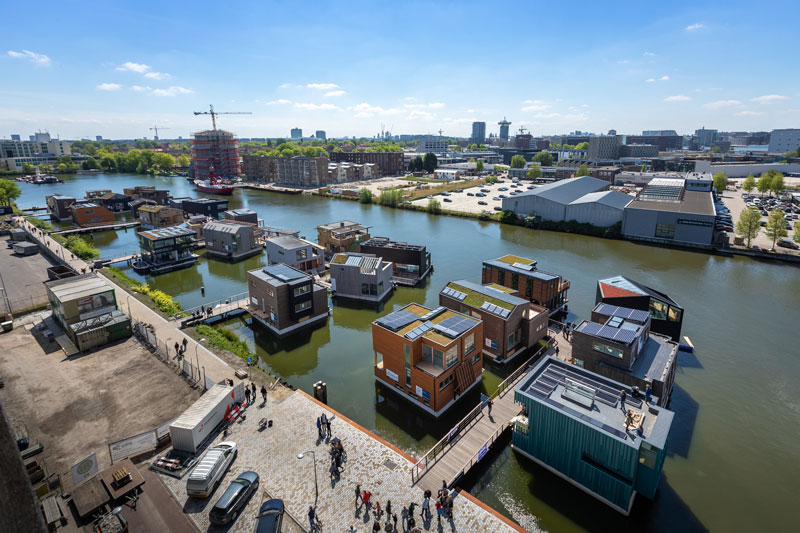by Michael Kaisers (CWI), Matthias Klein and Alexander Klauer (Fraunhofer ITWM)
New software and algorithms are being developed to help communities become less dependent on the electricity grid and less of a burden on it. This decoupling is an important step towards improving sustainability without compromising on affordability, comfort and efficiency of the overall system. Experience from pilot projects provides key insights into the management of the challenges that arise.
The transition towards (fluctuating) renewable electricity generation requires increased flexibility to use energy when available, either by shifting time of use or by storing energy. This capacity to be flexible is referred to as demand response. Such demand response is possible given decreasing storage prices, flexible thermal loads, electric vehicle charging schedules etc., but it requires intelligent coordination. The project “Demand response for grid-friendly quasi-autarkic energy cooperatives (Grid-Friends)” [L1] has developed and evaluated solutions that aim to achieve cost efficiency and maximum autarky by shared exploitation of storage and other flexible energy resources within communities.

Figure 1: Grid-Friends pilot site Schoonschip, Amsterdam Noord. © Isabel Nabuurs Fotografie.
The coordination challenge has been addressed with both fundamental and applied research, published in scientific conferences and journals. The research output can be roughly divided into three main directions. First, automated negotiation based on user preference models enables decentralised coordination of flexibilities within energy communities [1]. Second, fundamental research on reinforcement learning highlights how individual agents can learn to optimise their strategy in order to best respond within a collective of autonomous decision makers with potentially mixed interests, using methods such as opponent modelling [2]. Finally, future scenarios have been investigated that allow for the between-community exchange of flexibilities on regional energy markets [3]. Overall, the project resulted in 26 peer reviewed publications, and consortium members contributed to the discussions and policy briefs of several working groups within the knowledge community of the funding programme (ERA-Net Smart Grids Plus).
Practical challenges have been addressed with new software components and algorithms, added to the myPowerGrid internet platform [L2] and the local Amperix® energy management system, providing synergetic new capabilities across three interconnected sectors (electricity, eHeat and eMobility). Offered services include load-based dynamic power control of photovoltaic (PV) systems, curtailment event reduction by active scheduling of heat pumps, electric vehicles (EV), and battery storage, increasing consumption of locally generated energy between several controllable loads, generators, and storages based on forecasts, EV charging strategies based on EV state of charge (several car manufacturers are supported), and peak shaving, both physically per phase, and based on 15-minute intervals for customers paying for power usage in addition to energy usage.
The developed technology has been advertised at multiple trade fairs and within industry interest groups. Furthermore, a Fraunhofer spin-off Wendeware AG [L3] was founded on 14 March 2019 to commercialise the developed technology.
The myPowerGrid platform and the Amperix Energy Management System (EMS) have been deployed as a microgrid energy management system at the residential bottom-up community Schoonschip [L4], advised by the system integrator company Spectral. This pilot with 30 floating houses, each with a PV system, heat pump, and battery storage, demonstrates both a cutting-edge technical microgrid where power is shared and all the houses jointly controlled, accounted for and optimised behind a single 150 kVA grid connection, as well as a unique civic engagement to jointly invest in this infrastructure. Agreements have been put in place for the operation beyond the project’s duration. Schoonschip’s residents have overcome numerous challenges in managing and coordinating their community-driven project, which is a sign of their determination and dedication to sustainability.
The second pilot is a residential neighbourhood with a comprehensive metre infrastructure for water, electricity and heat, managed by evohaus IRQ GmbH, which developed an EMS that calculates an instant electricity price. The higher the component of renewable generation at a given moment, the lower the energy price, visualised by a traffic light system in a web-frontend and with three coloured LEDs inside the house/flat of the consumer. This system fosters consumer acceptance, since the impact of active participation is immediately visible. Once teething problems of smart hardware are eliminated and the legal framework is adjusted to further encourage consumption of locally produced renewable energy, the pilot project has good replication potential for a sustainable power supply in the future.
Links:
[L1] http://www.grid-friends.com/
[L2] https://www.mypowergrid.de/
[L3] https://www.wendeware.com/
[L4] https://schoonschipamsterdam.org/
References:
[1] S. Chakraborty, T. Baarslag and M. Kaisers “Automated Peer-to-peer Negotiation for Energy Contract Settlements in Residential Cooperatives”, Applied Energy, 2019.
[2] P. Hernandez-Leal, et al.: “A Survey of Learning in Multiagent Environments: Dealing with Non-Stationarity”, arXiv preprint arXiv:1707.09183, 2017.
[3] F. Lezama, et al.: “Local Energy Markets: Paving the Path Towards Fully Transactive Energy Systems”, IEEE Transactions on Power Systems, pages 1–8, 2018.
Please contact:
Michael Kaisers
CWI, The Netherlands











